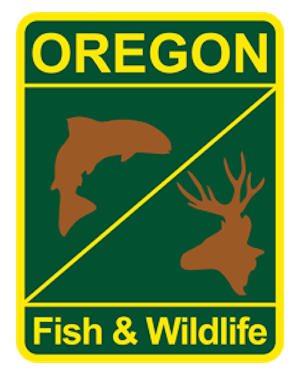Idaho Fish Report
ODFW Continues Efforts to Improve Big Game Regulations – New Proposals For 2020

by OR Department of Fish & Wildlife Staff
5-30-2019
Website
Change in Western Oregon rifle deer bag limit, new general season antlerless elk damage tag
SALEM, Ore.— Last year, ODFW began a multi-year effort to review and improve hunting regulations.
Many of Oregon’s controlled hunts and season structures were put in place decades ago and mostly untouched through the years. “We have undertaken a complete review of our big game hunting regulations with the goal of making them more consistent, in tune with current populations and issues, and simpler,” said Nick Myatt, ODFW Grand Ronde Watershed Manager who is leading the effort.
A number of changes took effect in 2019, and now ODFW has new proposals for 2020. One of the major ideas proposed will be a change in the bag limit for the hunt in Oregon with more participation than any other—the Western Oregon general rifle deer season, which more than 61,000 people hunted in 2017. ODFW is proposing to simplify the bag limit from “one buck deer having not less than a forked antler” to “one buck with visible antler.” All 600 series antlerless deer hunts in western Oregon currently with a “one antlerless or spike deer” bag limit would also change to “one antlerless deer.”
The current bag limit is different from the eastern Oregon deer bag limit, creates enforcement issues, and is not biologically relevant. It is a relic of when western Oregon offered a large number of antlerless deer tags in some wildlife management units. The proposed bag limit change is expected to increase harvest opportunities and success for general season rifle deer hunters by allowing the harvest of spike bucks. While it may result in an increase in buck harvest, there are sufficient bucks in the population to support increased harvest. All but one Western Oregon unit has met or exceeded the benchmark for observed post-hunting season buck ratio in at least two of the last three years.
The change may also help the buck deer population by allowing hunters to remove the bucks genetically inclined to remain spikes. Data shows that some yearling bucks have forked antlers while some 2-year-old or older bucks have spike antlers.
Other eastern Oregon hunts in the 600 series that allow for buck harvest will be moved to the 100 series buck hunts for consistency and to more equitably distribute hunting opportunity by giving each hunter one buck hunting opportunity every year.
General season antlerless elk damage tag pilot program
Over the last few decades, elk populations in many areas have increased on private land adjacent to row crop or irrigated agricultural lands, leading to conflict, economic damage, and reduced hunting opportunity in some units.
ODFW and landowners use a variety of tools to address this damage, including hunting through controlled antlerless elk hunting and damage tags. However, controlled hunts can be inconvenient for hunters who must know far in advance (by May 15) that they will have private land access and want this as their elk hunting opportunity. Damage tags can be cumbersome for landowners and staff to implement. In many areas, overall harvest is still inadequate and private land elk populations continue to increase.
To address these issues, ODFW is proposing a new general season elk damage tag with an antlerless bag limit for the 2020 hunting season. This tag would replace 19 controlled hunts and the need for landowner damage tags during those timeframes (Aug. 1-March 31 for elk de-emphasis areas and western Oregon, and Aug. 1-Nov. 30 in other areas). The tags would be valid in specific chronic elk damage areas mapped annually by ODFW. Hunters considering this new opportunity would still need to think ahead about permission to hunt on private land for this tag and the tag would be their only elk hunting opportunity
ODFW also proposes changing a few general bull elk rifle seasons in eastern Oregon (in Hood, White River, and central and SE Cascades) to controlled hunts, both for consistency and because some units are not meeting bull ratio objectives under the general season structure.
Other proposed changes include:
- Longer, later seasons for pronghorn, bighorn sheep, and Rocky Mountain goat hunts to give hunters who draw one of these prized tags a later opening and more time to hunt.
- 127 existing hunts being consolidated into 49 hunts.
- 91 hunt dates expanded, made simpler or made consistent with other hunts.
- 85 hunt areas expanded to the entire unit or hunt boundaries were made simpler.
- 57 bag limits made simpler or made consistent with other hunts.
- Nine new controlled hunt opportunities, including three late season mule deer hunts, two mountain goat hunts, and a pronghorn hunt.
A more complete list of proposed changes is available on MyODFW.com (under Big Game Hunting). ODFW is also hosting public meetings around the state in July to present these ideas and get feedback (meeting schedule will be posted on MyODFW.com in June).
The Fish and Wildlife Commission will be briefed on these concepts at their June 6 meeting in Salem, and make a final decision at their Sept. 13 meeting in Gold Beach when they adopt 2020 Big Game Regulations. Comments on the proposals can also be emailed toodfw.commission@state.or.us
###
Contact:
Michelle Dennehy, (503) 947-6022, Michelle.N.Dennehy@state.or.us
